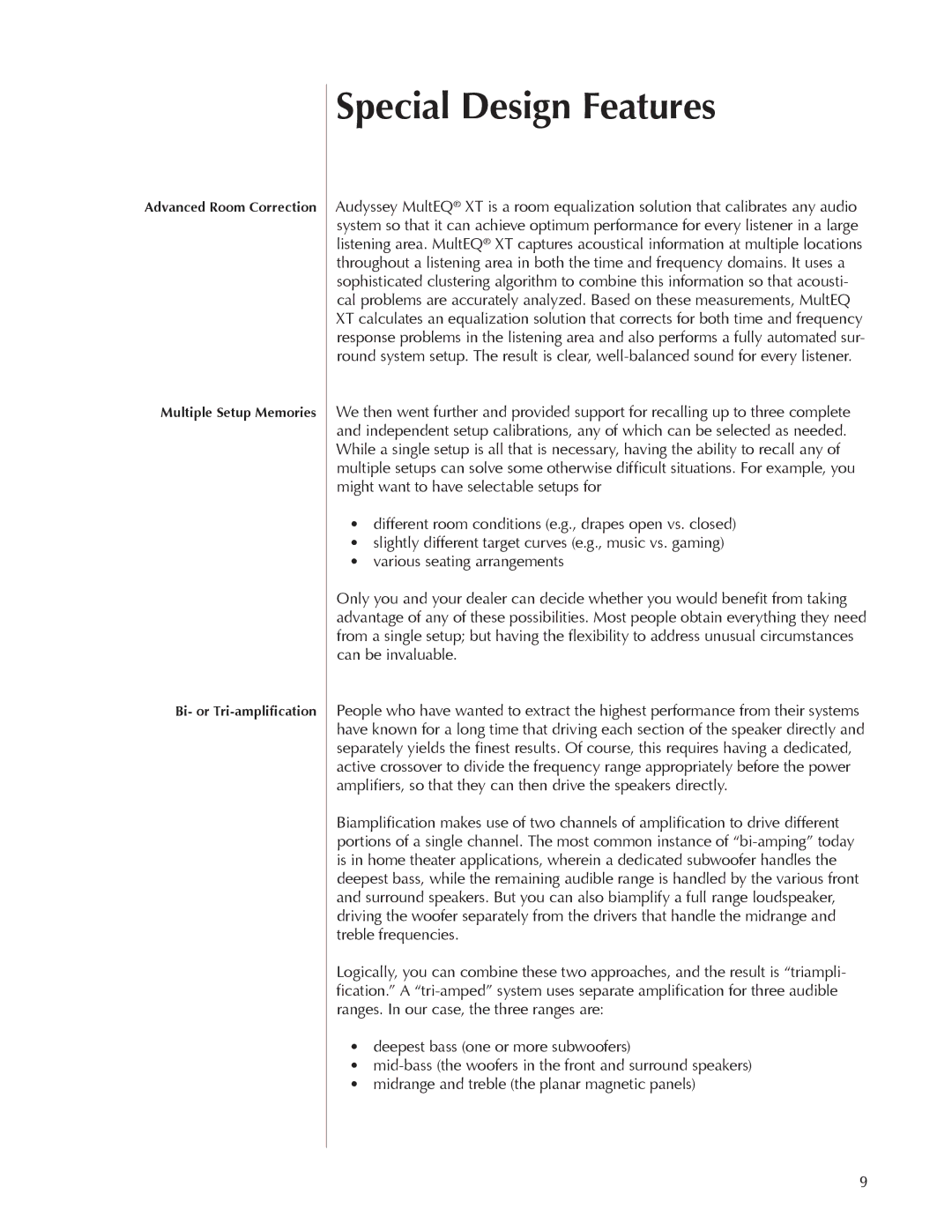Advanced Room Correction
Multiple Setup Memories
Bi- or
Special Design Features
Audyssey MultEQ® XT is a room equalization solution that calibrates any audio system so that it can achieve optimum performance for every listener in a large listening area. MultEQ® XT captures acoustical information at multiple locations throughout a listening area in both the time and frequency domains. It uses a sophisticated clustering algorithm to combine this information so that acousti- cal problems are accurately analyzed. Based on these measurements, MultEQ XT calculates an equalization solution that corrects for both time and frequency response problems in the listening area and also performs a fully automated sur- round system setup. The result is clear,
We then went further and provided support for recalling up to three complete and independent setup calibrations, any of which can be selected as needed. While a single setup is all that is necessary, having the ability to recall any of multiple setups can solve some otherwise difficult situations. For example, you might want to have selectable setups for
•different room conditions (e.g., drapes open vs. closed)
•slightly different target curves (e.g., music vs. gaming)
•various seating arrangements
Only you and your dealer can decide whether you would benefit from taking advantage of any of these possibilities. Most people obtain everything they need from a single setup; but having the flexibility to address unusual circumstances can be invaluable.
People who have wanted to extract the highest performance from their systems have known for a long time that driving each section of the speaker directly and separately yields the finest results. Of course, this requires having a dedicated, active crossover to divide the frequency range appropriately before the power amplifiers, so that they can then drive the speakers directly.
Biamplification makes use of two channels of amplification to drive different portions of a single channel. The most common instance of
Logically, you can combine these two approaches, and the result is “triampli- fication.” A
•deepest bass (one or more subwoofers)
•
•midrange and treble (the planar magnetic panels)
9
